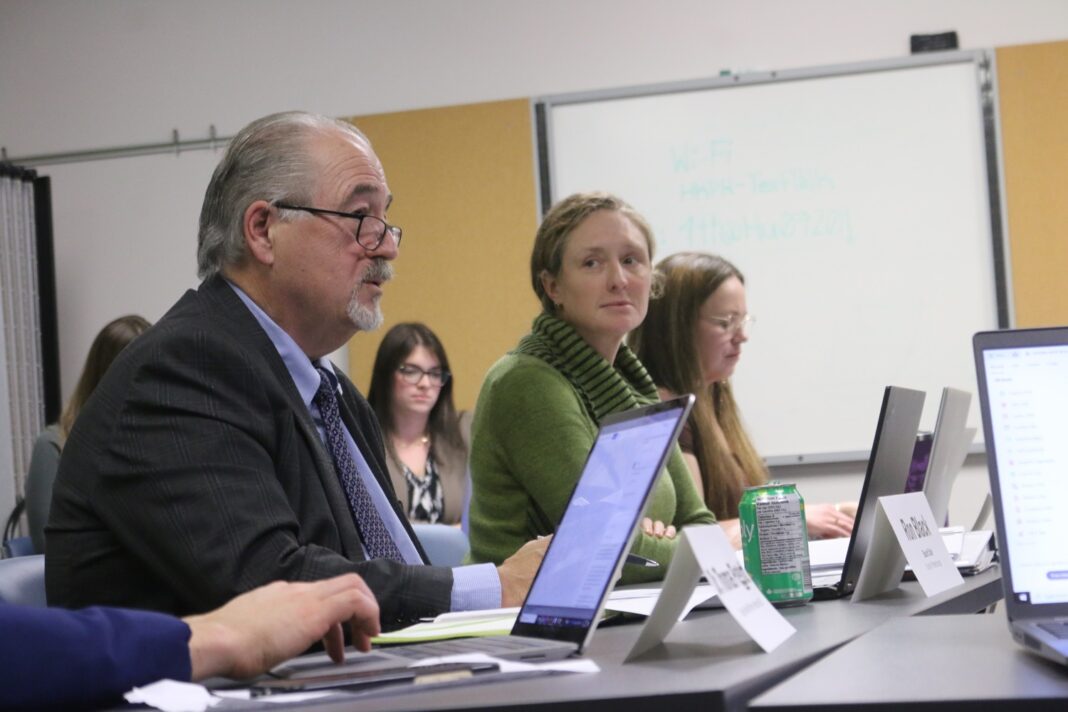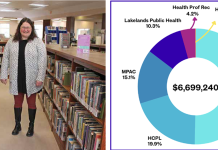Peterborough has been selected as the head office for the new Haliburton Kawartha Lakes Northumberland Peterborough health unit (HKNB). However, board chair Ron Black – picking up on comments made by County representative Cec Ryall – said he considers it more of a “communications centre.”
Following the Jan. 1 merger between the Haliburton, Kawartha Lakes, Pine Ridge district health unit (HKPR) and Peterborough Public Health (PPH), Black said the new conjoined board had to decide where its legal address would be.
The organization has four offices – in Peterborough, Lindsay, Port Hope and Haliburton. The board opted for the Peterborough site because it’s the only location it owns, though Black felt it held little significance.
“We have a very decentralized system here… we have managers working out of all four locations. The fact we can, and will be, moving meetings around, I don’t know if we want to say we have a head office… communications centre may be more appropriate,” Black said.
Ryall endorsed the move, saying it “makes good sense.” The former HKPR headquarters were in Port Hope.
It was confirmed during a Jan. 15 meeting that an existing $2.5 million mortgage on the property located at 185 King St. in Peterborough was being paid off in full by the provincial government as part of the merger. The estimated $8 million asset will be wholly owned by the health unit.
Merger ‘smooth’
Tony Yu, lead consultant at Toronto-based Sense and Nous, delivered an update on the merger – telling the board there has been lots of good work completed over the past eight months in anticipation of partnering.
He said the top priority is getting staff acclimated to new systems to ensure programs and services aren’t impacted, while he said discussions with non-unionized personnel over harmonizing job descriptions and employee terms and conditions was ongoing. That process will also happen with unionized staff, though Yu noted it needs to be initiated by union representatives. As yet, no discussions have taken place.
Angela Burton, representing consultancy firm Prosci – hired to advise on the merger – said some training had already been done with department heads and program managers to assist with integration, with more to be done in the coming months.
“Change is inevitable with something like this… [to be successful] it’s about applying a process and set of tools to lead the [staff] side of that change – identifying what do people need to know and be able to do to continue their job without interruption of services,” Burton said.
Dr. Natalie Bocking, HKPR’s medical officer of health, and Dr. Thomas Piggott, medical officer of health with PPH, were both at last week’s meeting and are collectively leading the new unit for now. A decision on leadership was discussed in-camera.
HKNB communications lead, Ashley Beaulac, said there was no information to share yet on their future. She noted talks were progressing to identify a new name and brand – with HKNB serving as the legal title only – with five options currently being considered.
“We hope to announce the new name in the coming months and a new brand identity to follow afterwards,” Beaulac said, with consultancy firm Trajectory Inc. leading that initiative.
Beaulac confirmed there are no plans to add or change services at the Haliburton office, adding “there is a commitment to maintain that office space/presence within the community.”
Why the need?
After Black noted HKNB was receiving more money than any other entity to merge, with the province kicking in approximately $10.1 million, Ryall pondered why the government was pushing for this, and what it stood to gain.
With both organizations struggling financially to maintain services, he asked if this would create greater financial efficiencies and improve the money situation locally. Yu said he felt it was more centred around improving capacity of public health.
“The experience over the pandemic in terms of the strain placed on staff, the strain on capacity and the lack of back-up or cover… I think is one of the key drivers,” Yu said. “One of the policy objectives stated [by the province] is they want to see multiple medical leadership [personnel] as back-up to provide coverage within every single health unit. This year one funding signals that commitment – I think the province is putting its money where its mouth is in terms of building capacity.”
Black said both health units were challenged through COVID with staffing.
“This commitment from the province will help us to improve the services we provide and put some resiliency behind the organization so that when we have a future public emergency, we have the resources we need in place.
“We have three years to work through budgets and try to right-size our organization. It may result in cost savings – that’s certainly in our window of expectations at some point. But I don’t think, ultimately, that was the purpose of the merger,” Black said
At the time of announcing the commitment to merge, the two health units committed to continuing all existing programs and maintaining existing staff levels, with HKPR employing about 170 people and PPH 130 people.





